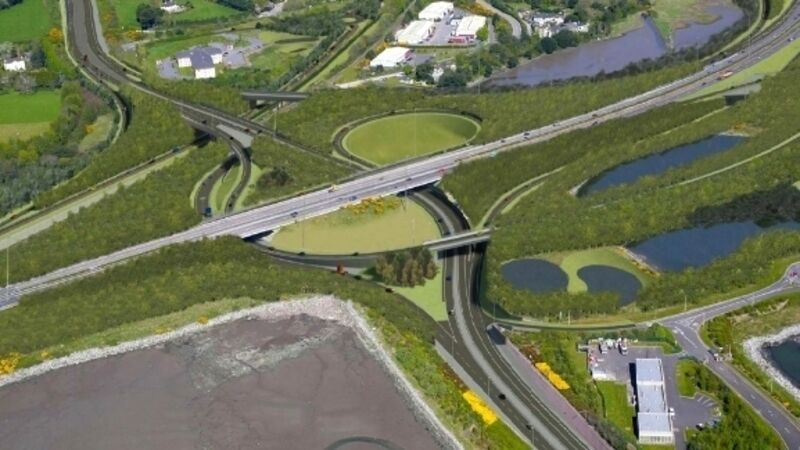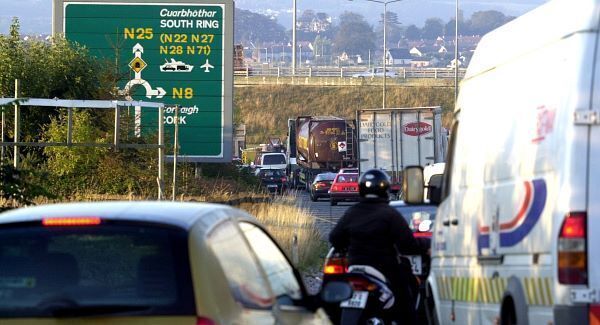Long wait goes on for key roads project

A significant upgrade of the Dunkettle Interchange was first announced in 2011. Cost overruns to the €100m project, revealed by this paper last week, could seeit delayed by up to 18 months, which would mean the entire process will have taken more than a decade. looks back at the long-awaited plan.
Recognising that the northern gateway into Cork City was a traffic blackspot, in April 2011 the National Roads Authority — which would later become Transport Infrastructure Ireland — unveiled five different options for the Dunkettle Interchange.
It had optimistically scheduled construction on the chosen plan to begin in 2014, once flyovers at the Bandon and Sarsfield Road roundabouts on the south of Cork City were completed.
The plan that was eventually selected included the creation of a number of dedicated local access roads around the junction, separating those making local journeys from regional and national journeys.
The designers proposed removing the signalised roundabout at the northern end of the tunnel for total free flow, while a dedicated slip road would be built on the city side of the tunnel so traffic could directly access the northbound lanes of the M8 Cork-Dublin motorway.
An Bord Pleanála’s oral hearing on the plan took place over two days in November 2012.
Inspectors were told that the infrastructure project was vital for the growth of the city and county, with projects such as the relocation of the Port of Cork to Ringaskiddy cited as an example of developments that needed an upgraded interchange if they were to happen.
Plans for a deep-water terminal in Ringaskiddy had previously been rejected on the grounds that the extra traffic generated would overwhelm an interchange already above capacity.
A planned science park at Curraheen was also raised at the meeting as evidence the works are needed — as was a major housing development at Glanmire that was dependent on an upgraded interchange to get the go-ahead from planners.
There were, however, some objections from locals who expressed fears that over development of the area would cause flooding, while others were concerned about the noise associated with the increased traffic using the interchange.
Despite this, in May 2013 the planning watchdog gave the NRA the green light for its plans, with conditions.

An Bord Pleanála voted by three-to-one to approve the scheme, and gave the all-clear for the issuing of compulsory purchase orders to buy up the land needed to construct some of the slip roads.
From that point on, however, the question of funding the project — estimated to cost in the region of €100m — has dogged its development.
By 2015, little work had been carried out. Paschal Donohoe, then the transport minister, told the Dáil he appreciated the importance of the project to Cork, but warned that “unfortunately, the financial realities are that the budgets proposed for my Department for 2016 and 2017 will continue to be very tight, limiting the scope for progressing additional new projects”.
Long-awaited news of funding for the project came six months later.
In September 2015, the Government announced a €27bn capital programme spread over six years — including the Dunkettle Interchange. From that point on, TII became responsible for answering as to the progress of the project.
Parliamentary questions on Dunkettle were invariably met with the reply that the transport minister of the day is responsible for policy and funding, but the planning and design is a matter for the TII.
Since then, advance works have been carried out and the design has been finalised.
However, in recent months the lack of a firm commitment for a starting date has caused concerns,as did the TII’s statement that it is “currently progressing on the establishment of the target cost” with the contractor.
Those concerns were realised last week when the Irish Examiner revealed a TII document that warned “at this early stage of assessment, there are areas of significant differences with the contractor in relation to pricing rates submitted”.
It cautioned that a failure to reach agreement on the cost — now estimated at €115m and some putting the figure rising to as much as €170m — would necessitate the replacement of contractors Sisk with another company, a procurement process that would delay the completion by some 12-18 months.

Fears that the project may even be scrapped as a result of the overruns were allayed by Taoiseach Leo Varadkar, who said there was no chance it would not go ahead — but he did not rule out that it might be delayed.
It was envisaged that the new Dunkettle Interchange would be operational by June 2022.
A worst-case scenario of an 18-month delay would mean works would not start until the first quarter of 2021.
There’s a long road to go yet on this key infrastructural project.















